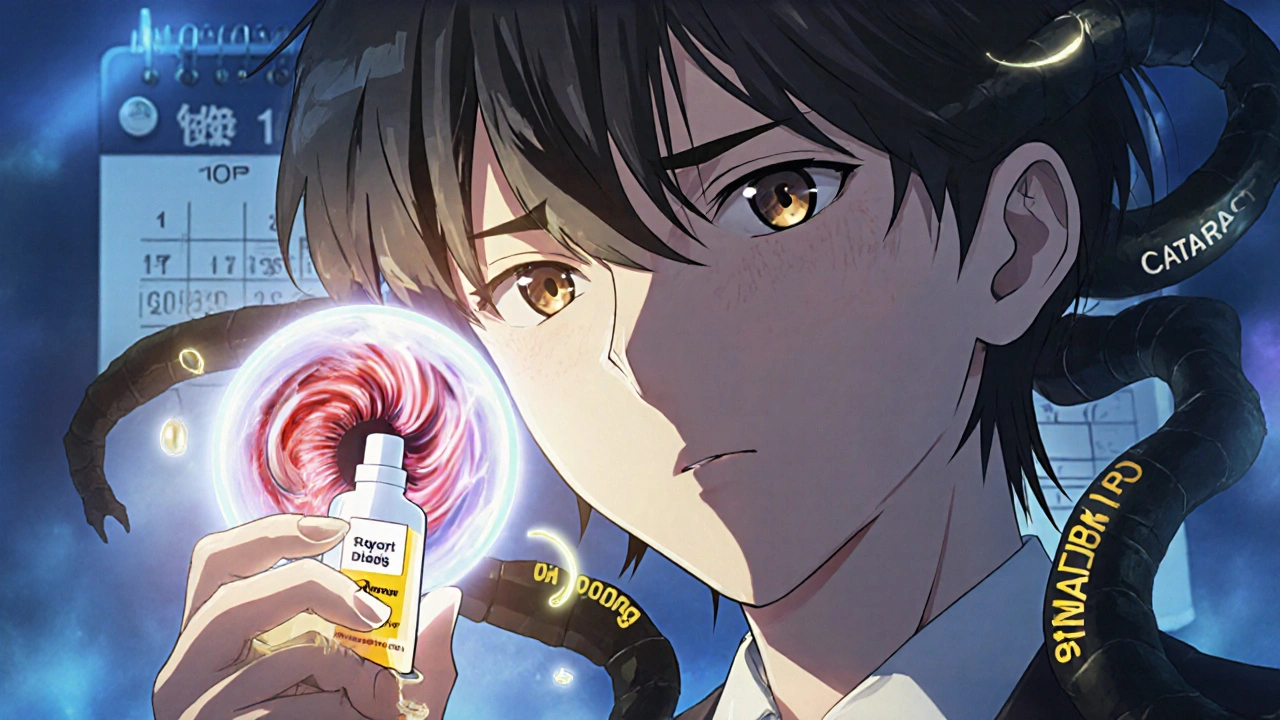Eye inflammation: what it is and what to do first
Red, gritty, painful, or watery eyes — that’s eye inflammation. It’s a common problem with many causes, and most cases aren’t emergencies. Still, knowing what to do right away can stop things from getting worse. Below you’ll find clear signs to watch for, practical first-aid steps, and when to get medical help.
Common causes and how they feel
Different problems can inflame the eye. Here are the usual suspects and what they usually feel like:
- Conjunctivitis (pink eye): redness, itching, discharge. Viral feels watery; bacterial often has yellow/green gunk. Very contagious.
- Allergic inflammation: intense itching, tearing, and both eyes involved. Often seasonal or triggered by pets and dust.
- Dry eye and blepharitis: burning, grittiness, crusty eyelids in the morning. Feels like something in your eye.
- Uveitis or iritis (deeper inflammation): pain, light sensitivity, blurry vision. Needs prompt specialist care.
- Injury, foreign body, or chemical splash: immediate pain, tearing, and sometimes reduced vision — treat as urgent.
Quick care you can try now — and when to stop
Start with simple, safe steps while you wait to see if things improve:
- Wash hands and avoid touching your eyes. Don’t share towels, pillows, or makeup.
- Remove contact lenses and don’t wear them until cleared by a doctor. Contacts can trap infection and make inflammation worse.
- Use a clean warm compress for crusty lids or a cool compress for itchy, allergic eyes. Ten minutes a few times a day helps.
- Rinse your eye with sterile saline or clean water if you’ve had dust or a chemical splash. If chemical exposure, seek emergency care.
- Over-the-counter artificial tears can ease dryness and irritation. For allergy symptoms, antihistamine eye drops help short-term.
- Don’t use steroid eye drops unless prescribed. Steroids can harm the eye when used inappropriately.
See a doctor if you have moderate to severe pain, sudden vision loss, intense light sensitivity, a persistent thick discharge, or symptoms after an eye injury. Also get checked if symptoms don’t improve in 48–72 hours or if you have a weakened immune system.
If you wear contacts and have any redness, pain, or blurred vision, stop wearing them and see an eye care provider same day. Kids with pink eye should stay home from school until a provider clears them, especially if there’s yellow discharge.
Prevention is simple: wash hands, replace old makeup, keep contact lens care strict, and treat allergies early. For recurring or deep inflammation, an eye specialist can find the cause and prescribe the right drops or tests. Quick action and basic hygiene fix most cases — but don’t wait if vision or severe pain appears.
Steroid Eye Drops: Benefits, Risks, and How to Monitor Them Safely
Steroid eye drops reduce severe eye inflammation but carry risks like glaucoma and cataracts. Learn how to use them safely, recognize warning signs, and monitor for hidden damage before it's too late.
Understanding Eye Inflammation in Lupus Patients
Lupus is an autoimmune disorder that can cause a variety of symptoms, including eye inflammation. People with lupus might experience discomfort, vision changes, and other eye-related issues due to the condition. It's important for lupus patients to be aware of these potential eye problems to manage their health effectively. This article explores the causes, symptoms, and management of eye inflammation associated with lupus.


